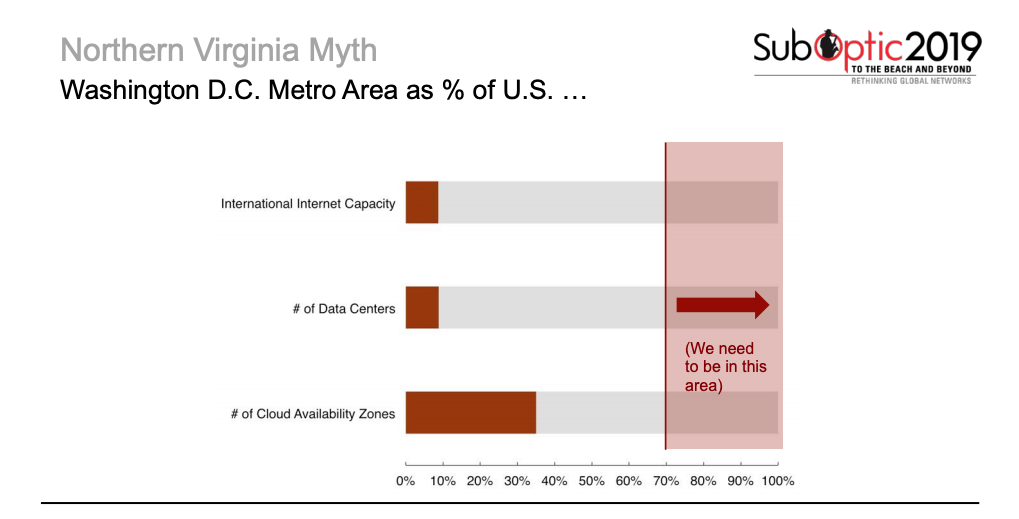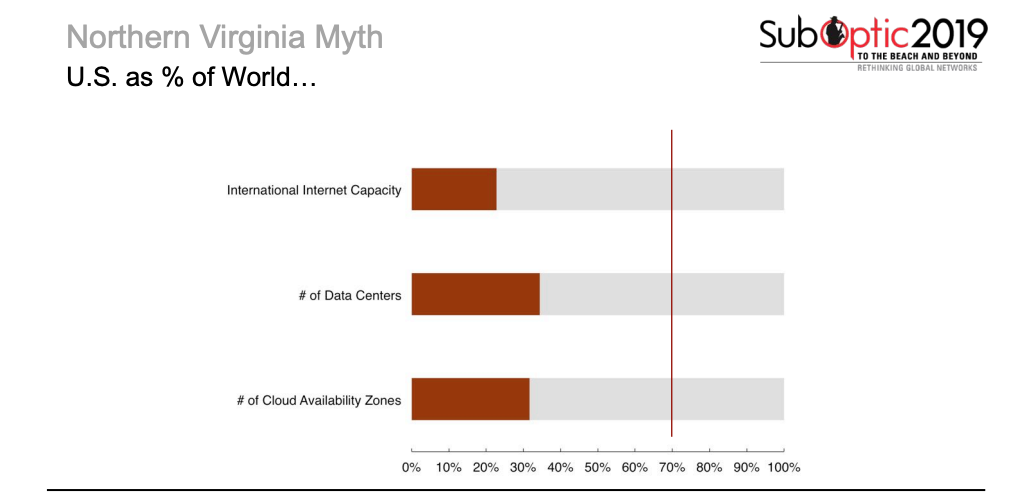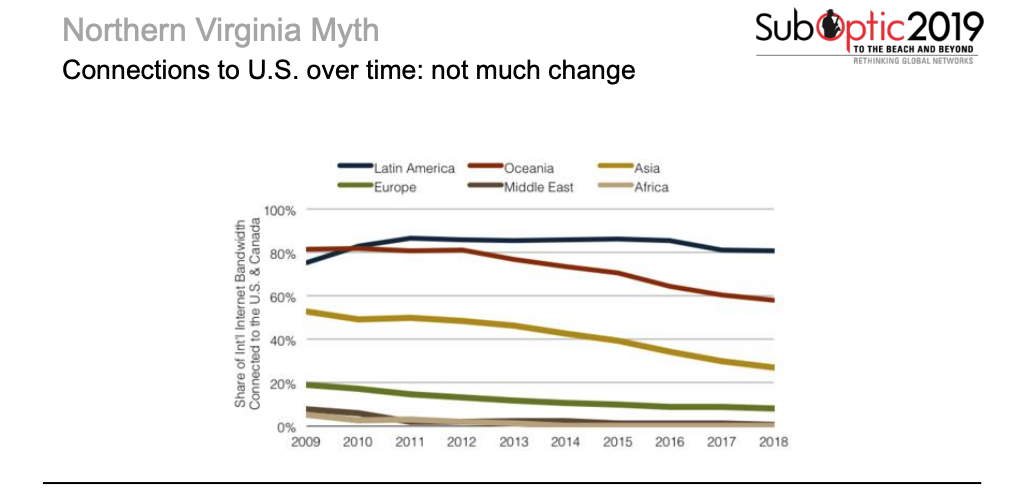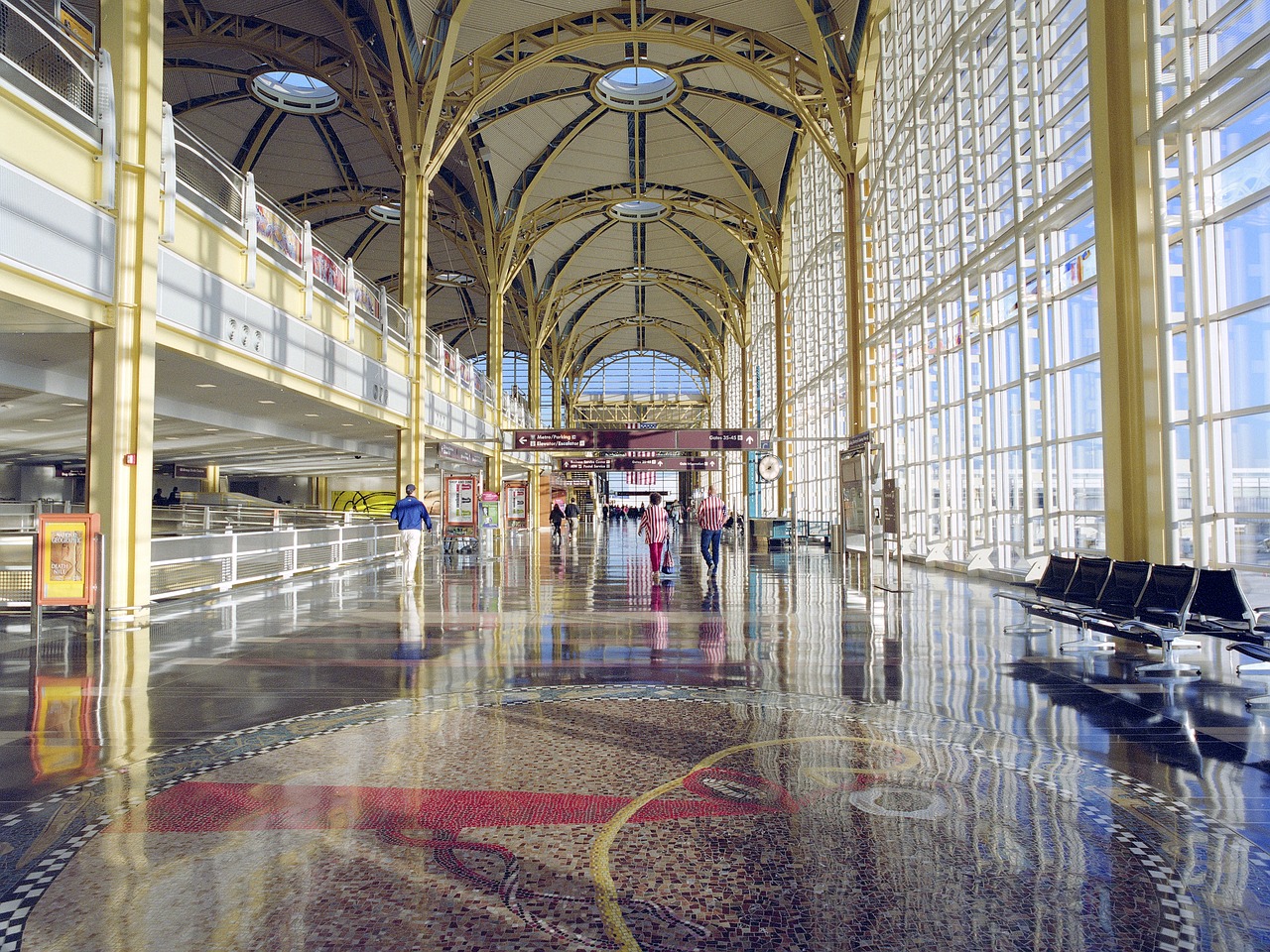Have you heard the one about 70% of the world’s internet traffic flowing through northern Virginia? This factoid has been cited in The Washington Post and Business Insider, among other major publications and government websites.
This statistic always seemed a little unlikely to us, so we sought out a few different ways to test its validity.
Does This Stat Hold Water Domestically?
First, let’s only examine the amount of U.S. traffic that flows through DC and northern Virginia. We’ll pretend for a moment that the rest of the world doesn’t contribute any internet traffic (’Merica!).
For this statistic to be true, we should see upward of 70% of all domestic traffic going through northern Virginia. (Technically it should be higher, because we know that the rest of the world is actually contributing traffic. But we’ll cross that bridge when we come to it.)
TeleGeography’s data on router-to-router capacity by city puts the DC metro area’s contribution to U.S. international internet capacity at around 9%. Not a great start.
IP capacity statistics can sometimes mislead. It’s possible, for example, that lots of traffic flows through gateway cities like New York and Miami but eventually make their way to Northern Virginia data centers. So why don’t we measure the DC region’s share of U.S. data centers?
Yet again, the results don’t look good: only 9% of all U.S. data centers are in northern Virginia.

Fine, but those are just run-of-the-mill data centers. What about fast-growing cloud services? AWS’ U.S. East region is hosted in Northern Virginia; perhaps there are lots of others that draw in traffic. The number of cloud availability zones gets us closer. We see a decent amount of cloud availability zones in northern Virginia, but it’s still only between 30 and 40%, barely halfway to our magic number.
What About the U.S. in General?
Taking this thought experiment a step further, let’s look at the United States. What if we just imagined that every single bit of U.S. traffic passes through DC? Where does the U.S. land in terms of the world’s internet traffic?

Well. Only 23% of the world’s international internet capacity connects to the United States. The rest connects to each other. Again, not a hot start.
And data center-wise, we’re still in the minority with only 30-40% of the world’s data centers living in the U.S. Cloud availability zones clock in with a similar measurement of around 30%.
Is This Just an Outdated Statistic?
I also explored internet capacity connecting to the United States by region since 2009. While there have been small changes—Asia and Oceania have become less dependent on the U.S.—the lines are mostly flat.

This means that it’s unlikely that at any point in the last decade did 70% of the world’s traffic flow through the U.S., much less northern Virginia. If you go back to the late 80s or 90s when the proto-internet networks were at play, the 70% statistic may have held true.
The Verdict?
We love Loudoun County (home to most of the DC region’s data centers). It’s importance to the global internet is under-appreciated. We think the Loudoun County Economic Council does a great job of promoting our industry. But there’s just no way that 70% of the world’s internet traffic flows through the region. Another myth busted.
Tim Stronge
Tim Stronge is Chief Research Officer at TeleGeography. His responsibilities span across many of our research practices including network infrastructure, bandwidth demand modeling, cross-border traffic flows, and telecom services pricing.





